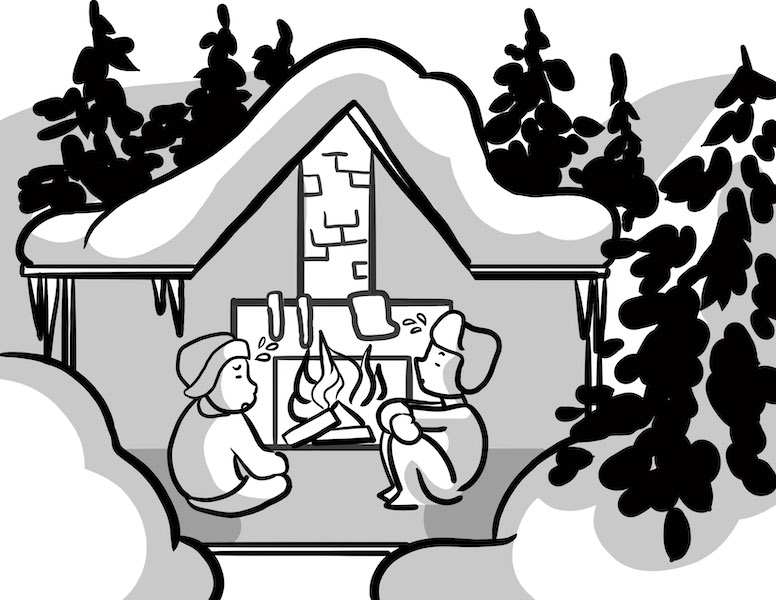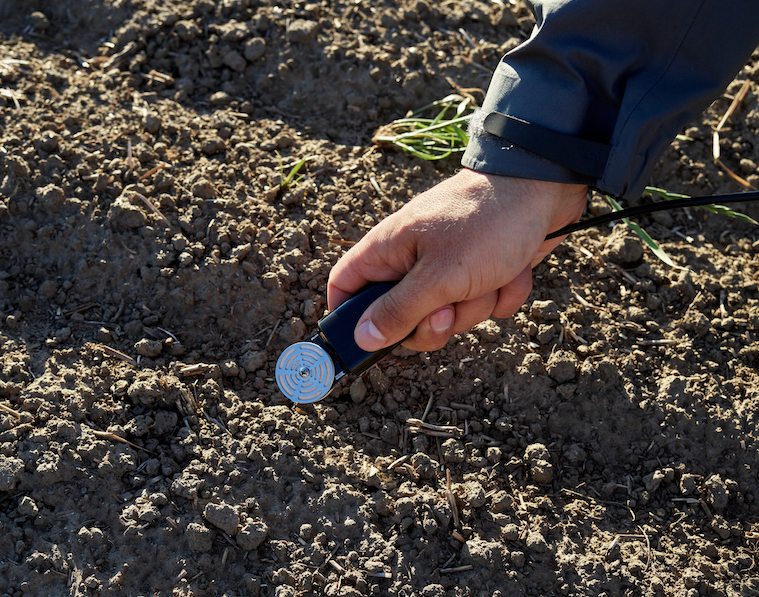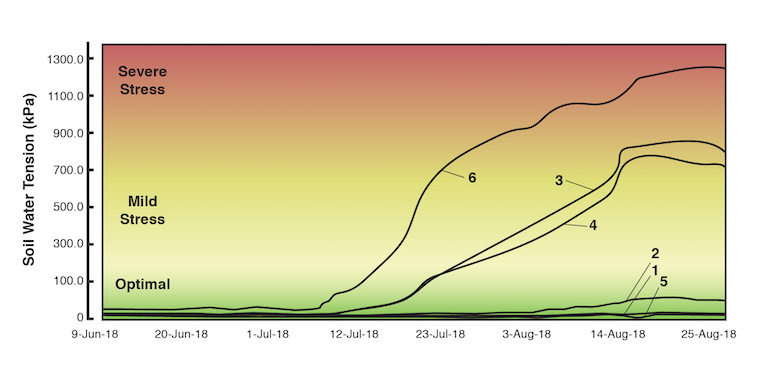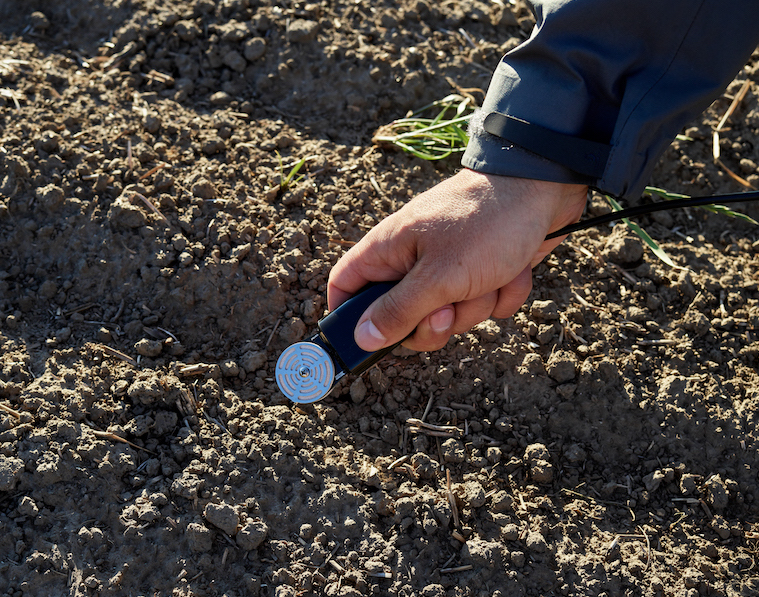By Colin S. Campbell, Ph.D.
With Bryan G. Hopkins, Ph.D., and Neil C. Hansen, Ph.D.
Years ago, I received a call from Dr. Bryan Hopkins and Dr. Neil Hansen about the sports turfgrass they were growing in cooperation with the Certified Sports Field Managers at Brigham Young University (BYU), and their turfgrass research and education programs. They wanted to optimize performance through challenging situations, such as irrigation controller failure and more.
Together, we began intensively examining the water in the rootzone. As we gathered irrigation and performance data over time, we discovered new critical best practices for managing turfgrass irrigation, including measuring “soil water tension.” We used soil water tension to reduce the effort it took to keep the grass performance high, while saving water costs and reducing disease potential and poor aeration. We also reduced fertilization costs by minimizing leaching losses out of the rootzone due to overwatering.
What is soil water tension?
In simple terms, soil water tension is a measure of the energy state of water in the soil. It has a complicated scientific definition, but you don’t have to understand what soil water tension is to use it effectively. Think of it as a type of plant thermometer that indicates “plant comfort” – just as a thermometer indicates human comfort. Here’s an analogy that explains the concept of soil water tension in terms of optimizing irrigation.
As a boy, I joined my friends on a winter hike to a cabin near the top of a beautiful mountain. After an afternoon of sledding, our group trudged back to an icy cabin. We hurried to build a fire to warm up and dry out. We kept adding more and more logs so we would be comfortable, but soon the cabin was sweltering. The fire was so hot that some of the boys’ boots melted on the hearth. In an attempt to cool down, we let the fire die and were soon shivering with cold and struggling to stoke up the fire again. Clearly, we were missing a fundamental understanding of “the amount” of logs needed to add to the fire to be warm and comfortable in the cabin.

A similar problem existed for a Wisconsin professor named Warren S. Johnson in the late 1800s. Finding the janitor to add coal to a furnace downstairs to keep his students comfortable was an imprecise and time-consuming effort. He could have tried to calculate how much heat each piece of coal contained, the size of the room, and how much heat existed already. But instead, he invented a simple device called a thermostat. This invention used temperature and a bell down in the basement to alert the janitor to add more coal when the room dropped below the optimum temperature range for their comfort. The thermostat became the primary product of Johnson Controls, a company that still exists today.
Managing soil water for plant growth has many parallels to these stories. Often, when people manage irrigation water, they recognize that a plant is struggling as the soil dries, and they add water to make it comfortable again. The problem is, just like the boys in the cabin, they add too much water because they don’t know where the upper limit is or “how much” water is enough. Then they let the soil dry out again to a point where it’s parched. This cycle is repeated over and over. In other cases, they are so afraid of brown spots that they keep the soil near saturation, which is wasteful of water and harmful to plants. Many irrigators think installing a soil water content sensor will fix this problem, but they are mistaken. This approach has similar problems to adding logs to the fire.
A water content sensor can only tell you the amount of water in the soil. It can’t tell you if that amount is optimal for plants. A soil water tension sensor (also called a water potential sensor) will give you that information. With soil tension, you measure a parameter that – like temperature – will tell you about the energy of water in the soil, or how much soil water is available to your plants.
Understanding soil water tension is easier than it seems
Everyone is familiar with temperature. We’re constantly checking the temperature to make decisions, but, in doing so, we rarely, if ever, think about its complicated definition as the energy state of a system. We simply know what it means to our comfort. We understand the units (degrees) without knowing how they’re tied to the third law of thermodynamics.
Soil water tension is a far less familiar term that defines the energy state of water in soil and is analogous to temperature. It defines the water comfort range of plants in a similar way that temperature defines the comfort range for humans. Simply put, it’s the thermometer for plant water. Some resist using water tension because it’s hard to understand. But while its definition is complex, the plant “comfort ranges” are well established. So there’s no need to deeply understand the measurement to get the benefits.
The following table is taken from Physical Edaphology, a book by Dr. Sterling Taylor that outlines some established crop comfort ranges in units of kPa. There are also many other research papers in the literature that list comfort ranges of various plants.

For example, the comfort range of a potato plant is about 30 to 50 kPa. You may not know what a kPa is, in the same way that you may not know exactly what a Fahrenheit degree is. But, you can still use that scale to measure the “comfort” of your plant. In our experience, an optimal comfort range for closely mowed turfgrass is between 20 to 100 kPa. (L.J Aronson, A.J. Gold, and R.J. Hull. 1987. Cool-Season Turfgrass Response to Drought Stress. Crop Science. 27:1261 – 1266)
Soil water tension is a plant stress indicator
Because we often work with potato growers, we’ll illustrate this point with potato irrigation data, but the same principles apply to turfgrass. Figure 2 shows potato yield at six different locations in a 40-acre field. Clearly, the longer the potato plants stay in the stress range (above 100 kPa), the larger the yield loss.

This same concept applies for all plants, including turfgrass. Obviously, the goal for turfgrass is a consistent, robust, stable playing field that looks great, as opposed to producing yield, but the principles are the same. Managing turfgrass within its water comfort zone will result in healthier plants by providing the proper balance of root zone water and air. And it will minimize disease and preserve nutrients while conserving water and enhancing the quality of the playing surface. With today’s challenging freshwater situation, these are powerful tools to help with conservation.
Is soil water tension hard to measure?
Some people resist using soil water tension, because, historically, it’s hard to measure. But this is no longer true. Over the years, many devices were created to measure soil water tension, but generally suffered from debilitating problems such as inaccuracy, poor repeatability and disappointing longevity. But, like most technologies, advancements have overcome many of these problems. We’ve been installing these next-generation sensors in turfgrass, and we’ve learned much.

Can you control irrigation using only soil water tension?
All plants, including turfgrass, have a strong relationship between soil water tension and their performance or behavior. Why not just measure soil water tension to control irrigation? You do the same thing when setting the thermostat temperature. It does not tell you how much energy it will take to heat or cool; but by setting the temperature threshold, you know you’ll be comfortable. Can you do the same thing in the soil? Yes…you could simply turn the water on long enough to bring the tension back to the top of the comfort range (this is commonly done).
However, there are a few potential problems. First, you may not want to irrigate at the exact time the sensor determines you need it (such as during the day in the middle of play). In an HVAC system, the thermostat simply turns the system on, and you have heating or cooling immediately. Also, some soils may experience a lag time between when you apply water and when the tension returns to a minimum, so it would help to know how much water is necessary to apply.
Why won’t water content alone tell you when to irrigate?
Historically, almost everyone who thought about soil water thought of water content. The simple reason is that water content is easier to measure, and there are a plethora of available sensors. It’s no surprise that many have used it to schedule irrigation, but it can sometimes leave them in the dark. We worked with one manager who was simply looking at water content in the rootzone to control irrigation. As the summer progressed, the water content only changed a few percent, and he felt confident that his plants were getting enough water. He didn’t realize he was missing critical stress information.
In the meantime, we were watching the soil water tension sensors at the same locations, spread across the field (Figure 4). According to the tension, several areas were moving into mild or severe stress. While initially distrusting the data, the manager eventually grew to see that the sensors were correct. He now has a number of soil water tension sensors installed, and trusts them before any other measurement.

Measuring soil water tension saves you time and money
Accurate, inexpensive soil water content sensors have made water content a justifiably popular measurement. But, as many people have discovered, a good hammer doesn’t make every soil water problem a nail. Water content can only show you how much water there is. Soil water tension shows whether that water is available to plants. This information ultimately saves you time and money by eliminating problems associated with over irrigation. To return to the cabin analogy, we didn’t know if we would be comfortable in our cabin just by knowing “how many” logs we added to the fire. In the same way, we won’t know if a soil is at optimal moisture for plant growth just by knowing “how much” water is there, or the water content. Soil water tension gives the precise full and empty points for optimal performance. As the water tension drops outside the turfgrass optimal range, we know we need to add water.
This is just a brief introduction of the power of measuring soil water tension. There are a number of resources available to learn more about things such as how to determine the amount of water to add, how to use it in conjunction with evapotranspiration, irrigating with saline water, and more.
Colin S. Campbell, Ph.D., is soil scientist at METER Group Inc.
Bryan G. Hopkins, Ph.D., CPSS, is a professor of Soil Science in the Plant and Wildlife Sciences Department at Brigham Young University.
Neil C. Hansen, Ph.D., is department head and professor of Soil Science in the Plant and Wildlife Sciences Department at Brigham Young University.


